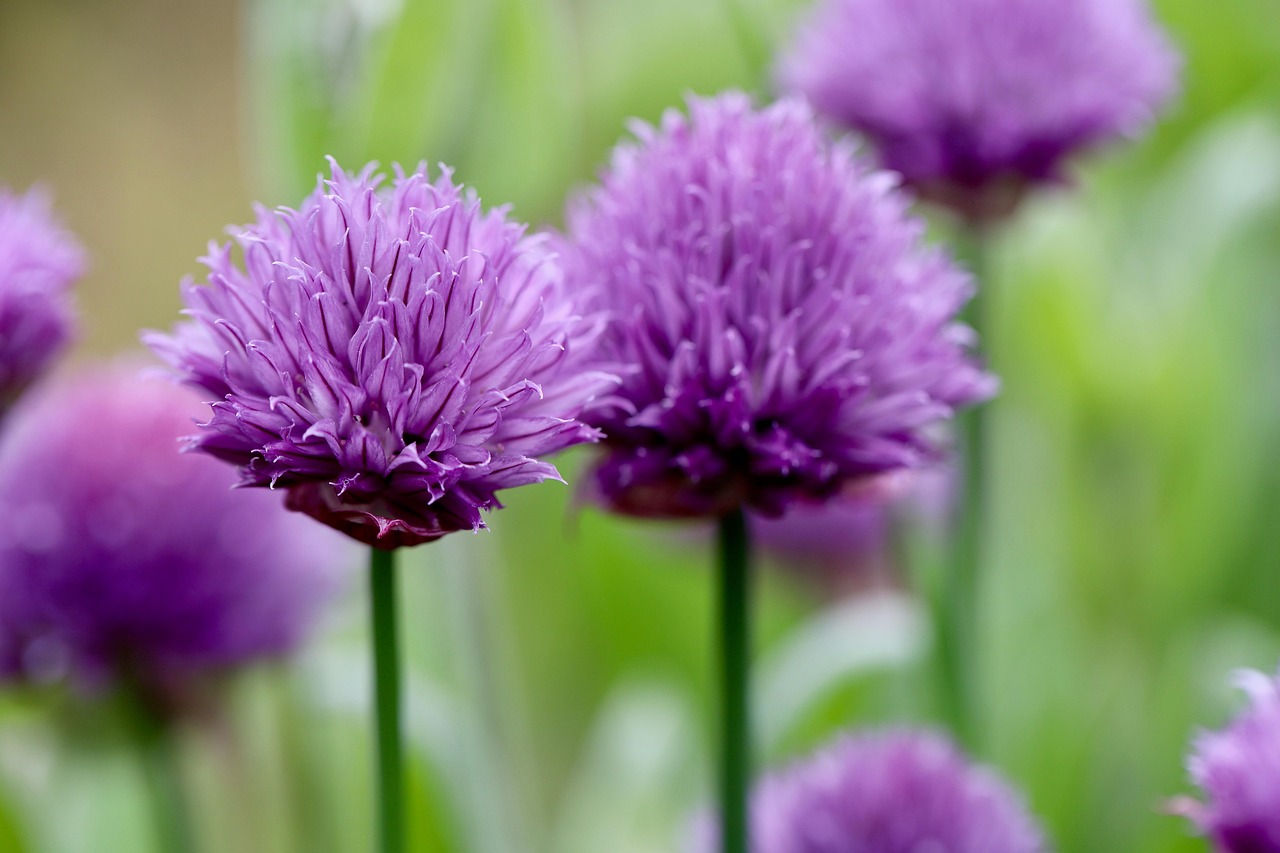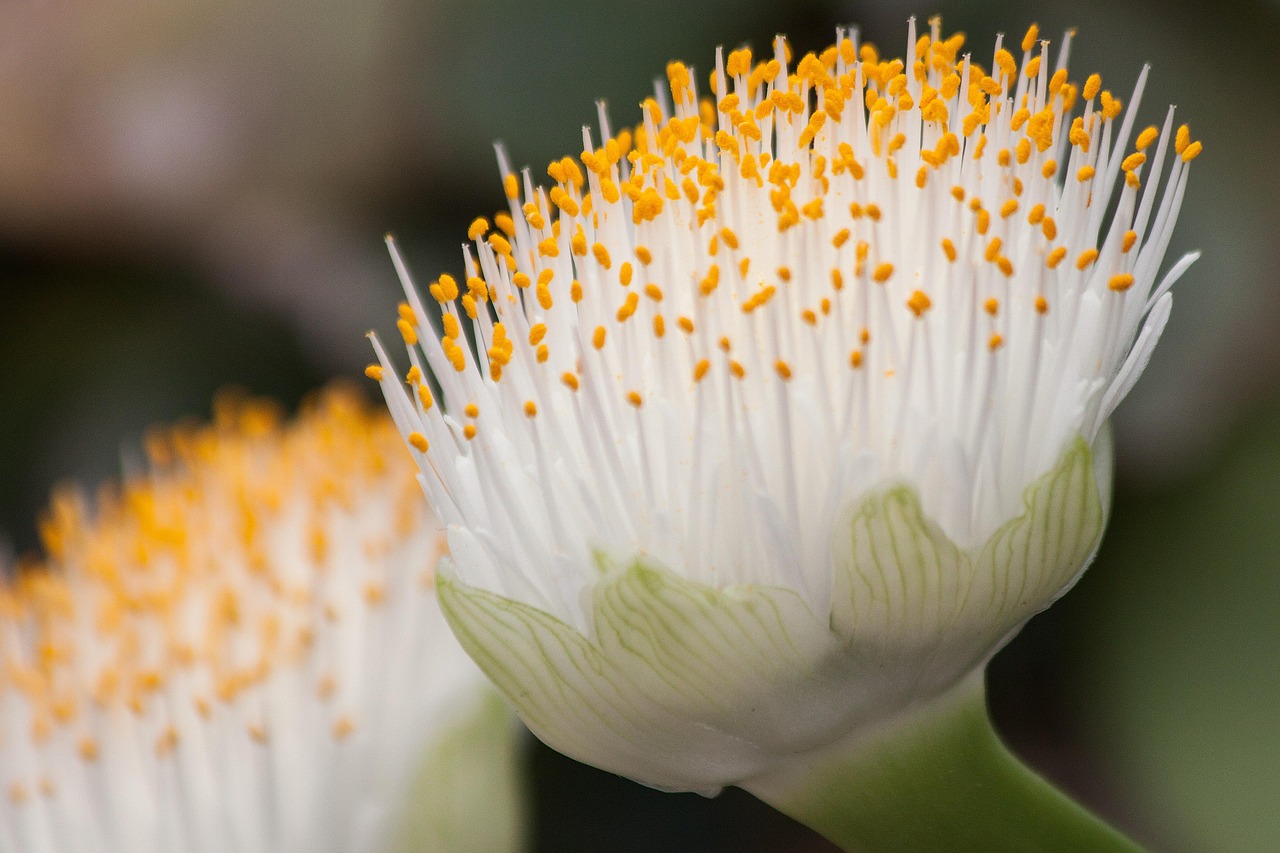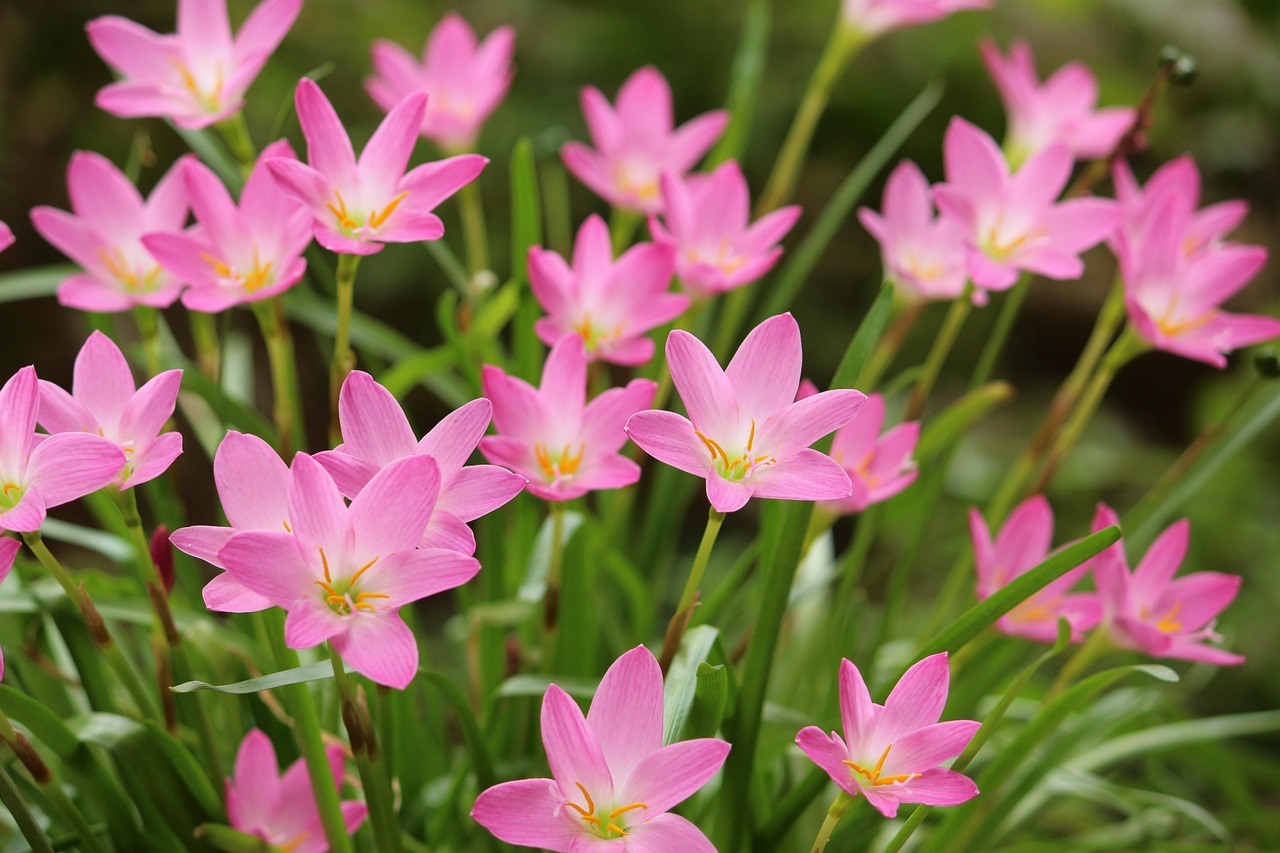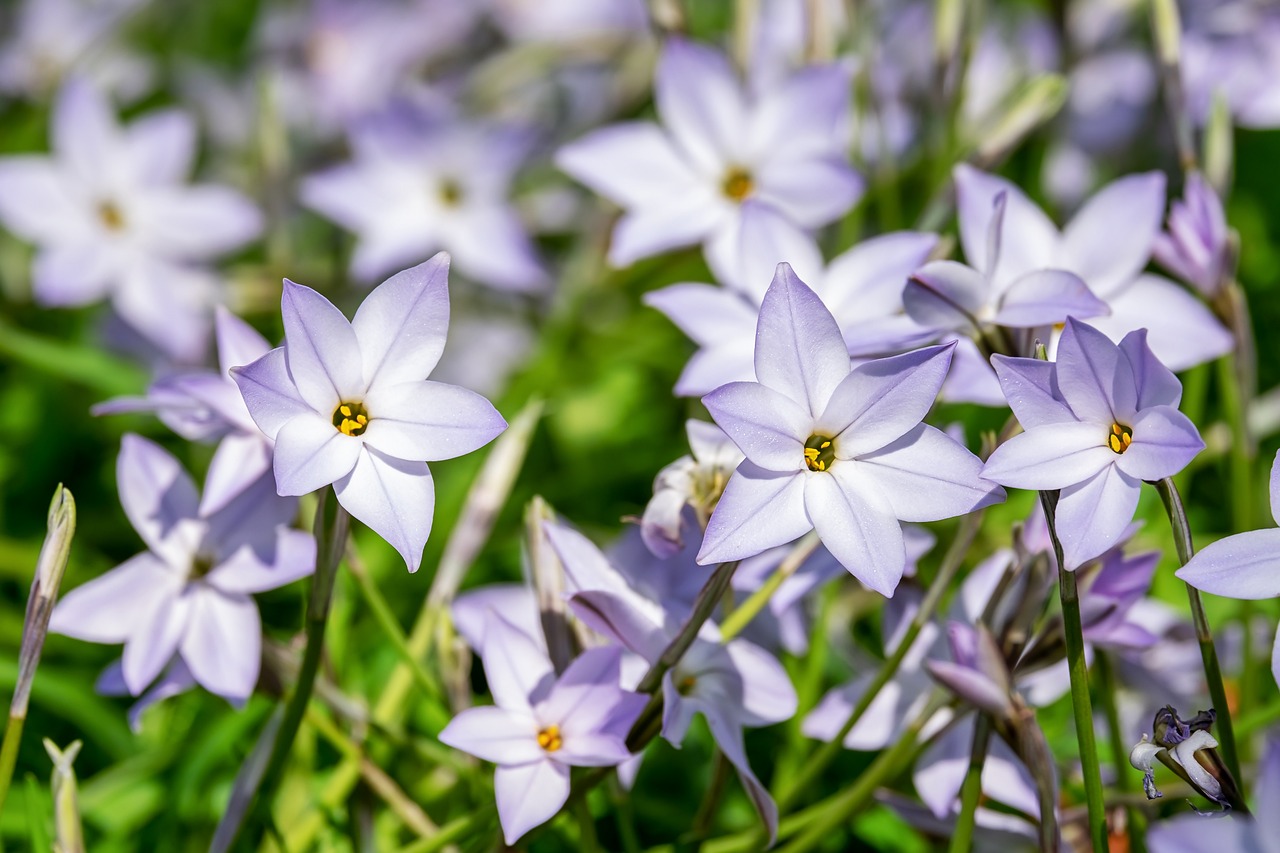Lycoris|A Flower Symbolizing the Autumnal Equinox Landscape
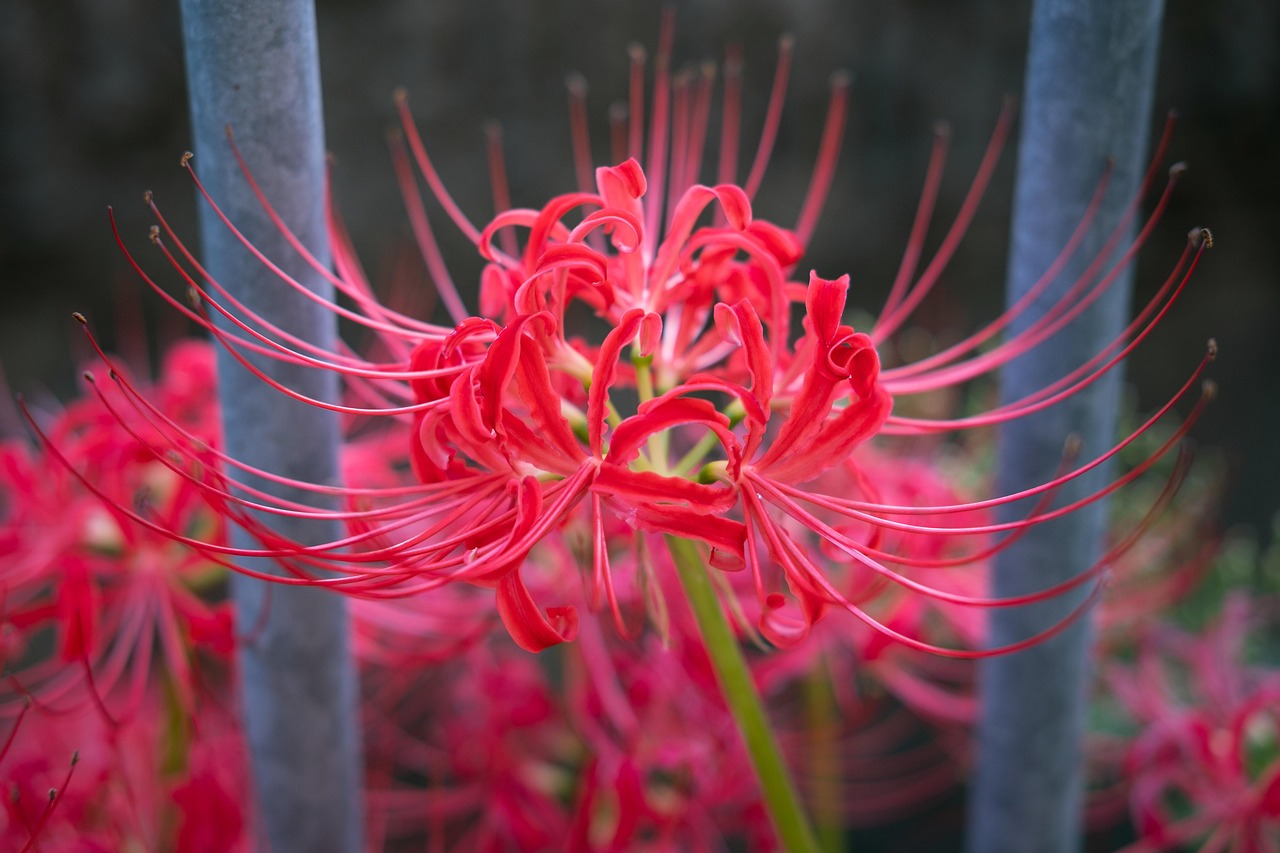
Lycoris is a bulbous plant distinguished by its vivid flower colors and unique floral form. In Japan, it is widely known as Higanbana and is cherished as a flower that brightens the autumn scenery.
In this article, I provide detailed information on the basic characteristics of Lycoris, its cultural and historical significance, as well as tips for cultivation.
Basic Information
- Scientific name: Lycoris spp.
- Family: Amaryllidaceae
- Origin: East Asia (China, Japan, Korea) and Southeast Asia
- Appearance: The plant produces flowers in a radial arrangement atop slender stalks. Colors vary—red, white, yellow, and pink—depending on the variety.
- Blooming season: From late summer to autumn, Lycoris blooms without leaves, producing only flowers.
Cultural Significance Worldwide
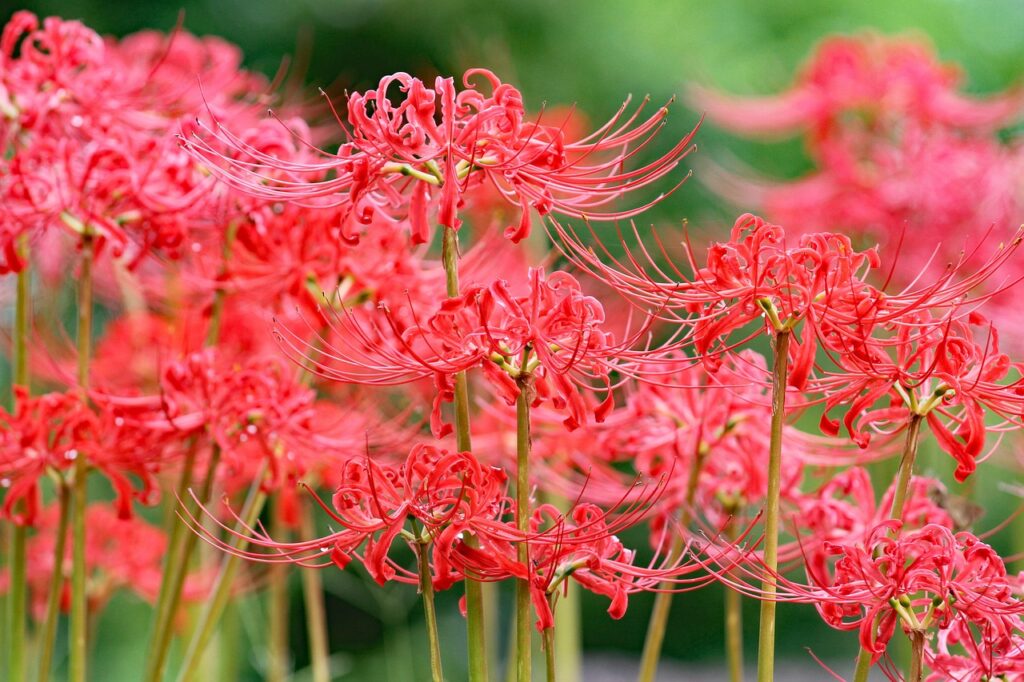
Lycoris, with its mysterious blooming pattern and vivid colors, carries special meanings in different cultures. In Japan, it is known as Higanbana, blooming around the autumn equinox and regarded as a flower of remembrance for ancestors. It is often planted near temples and graveyards, becoming a symbol of seasonal landscapes. Its toxic bulbs also meant that it was historically used to protect farmland from pests.
In China, Lycoris is called Manjusha-hua and is associated with Buddhist scriptures and legendary tales. While sometimes seen as an auspicious flower, it also symbolizes death and separation.
In Korea, it is known as Sangchuhwa, symbolizing unfulfilled love because the flowers and leaves never appear at the same time.
In Europe, Lycoris was introduced in the 19th century as an ornamental plant and is sometimes called the “Spider Lily” for its unique shape. Since then, it has been appreciated as a garden flower that brightens autumn.
Historical Episodes
Lycoris has long been intertwined with people’s lives. In Japan, its presence is recorded as early as the Heian period, and by the Edo period, it was already widely cultivated. It was frequently planted near temples and fields, serving not only for decoration but also for pest control and soil protection.
In China, Lycoris has been linked to Buddhism since ancient times, and the name Manjusha-hua appears in scriptures as a flower said to bloom in paradise. Legends tell that souls gather where this flower blossoms, giving it a mystical meaning.
In the West, Lycoris was introduced relatively late, during the late 19th century, brought from Japan and China. Its unusual shape was highly valued, and it quickly gained popularity as an ornamental plant, particularly in Britain and the United States, where it remains a favorite in autumn garden design.
Gardening Advice
Lycoris is hardy and easy to grow, but a few key points help ensure beautiful blooms.
Sunlight
Prefers full sun but tolerates partial shade.
Watering
Water moderately during the growing season. Keep relatively dry during its summer dormancy.
Soil
Well-drained soil is essential. Sandy soil or humus-rich potting mix is suitable.
Fertilizer
Apply slow-release fertilizer in spring and autumn.
Cold resistance
In colder regions, mulch bulbs planted outdoors in winter, or grow them in pots for protection.
Conclusion
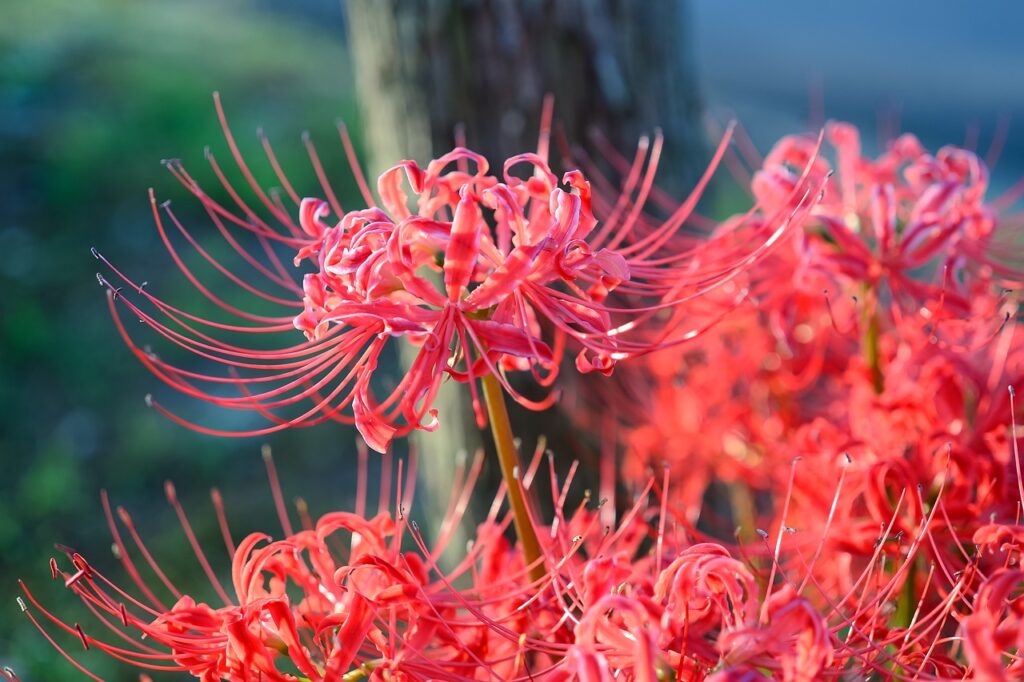
Lycoris is a bulbous plant admired for its striking flowers and is beloved in Japan as Higanbana.
It has deep connections with Buddhism and legendary associations in China and Korea. Brought to Europe in the 19th century, it quickly spread as a popular ornamental plant.
With proper sunlight and well-drained soil, Lycoris can be grown successfully, rewarding you with stunning blossoms year after year.


